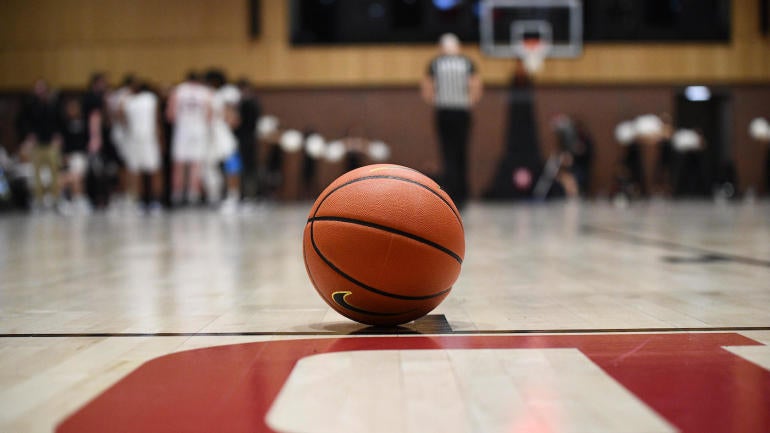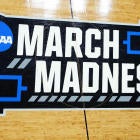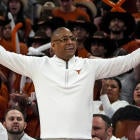
An innovative nonconference scheduling initiative is developing behind the scenes in college basketball that, if adopted, would adjust the landscape of the sport each February.
Twenty-two of Division I's 32 conferences have been receptive to an ambitious scheduling concept that would introduce back-to-back non-league games played just a few weeks prior to Selection Sunday, WAC commissioner Brian Thornton and WAC associate commissioner Drew Speraw told CBS Sports. The selling point of these out-of-conference matchups would be to pit projected NCAA Tournament candidates, in addition to bona fide bubble teams, against each other. What's more, there would be an array of games between schools fighting to improve their NCAA tourney résumés.
Here's how the first-of-its-kind concept would work: For one week in February, a slew of leagues would pause their conference schedules and instead have all their members play two nonconference opponents. The model would have every team involved play one home game and one away game, with the majority of those games happening three days apart — many on Wednesday and Saturday — with the window commencing after Valentine's Day.
The matchups would be decided by an algorithm that would ensure the best teams play the best teams. The games wouldn't be determined until the end of January. Think of it like a mini-Selection Sunday within the regular season. You could even build a television show around it. How fun would that be?
If the important multi-bid leagues (American Athletic Conference, Mountain West, Atlantic 10, West Coast Conference) decide to do this, college hoops could theoretically have late-February nonconference games akin to Gonzaga-Houston, Colorado State-Davidson, Memphis-Saint Mary's or Boise State-Davidson — all teams that comfortably made the 2022 NCAA Tournament. This would provide a late-season scheduling opportunity that would undeniably enhance those conferences' visibility and viability to get more teams into the discussion of qualifying for the NCAA Tournament.
This groundbreaking concept was conjured up by Thornton, a former college basketball coach, who initially toyed with the idea in 2020 when he was an associate commissioner at the American Athletic Conference. There is no formal name attached to the event yet, but the notion as a whole stands to improve college basketball's regular season.
It's slightly similar in concept to ESPN's "Bracket Busters" template from the 2000s and early 2010s, only instead of having a handful of mid-major teams play each other on one day, this would be a nationwide event that would span over nearly a week and ensure teams played in home and road environments. It's "Bracket Busters" on steroids.
"It's a home and away [setup], regardless of conference affiliation, regardless of ranking, the best teams are playing 'like' matchups," Thornton said. "A Quad 2 team plays Quad 2 team. It's merit-based. You earn your way in. … You get two great games you wouldn't be able to get on your own."
Initially, Thornton hoped to make this a four-league alliance of sorts. Then, in talking to people around college sports, the response was encouraging; getting eight conferences involved seemed doable. At this point, at least a dozen leagues have expressed serious interest about doing this and are ready to move forward.
Michigan State associate AD Kevin Pauga, a man who is considered a scheduling guru in college athletics, has been the third piece in crafting this zealous idea. Pauga — who also built the KPI, one of the six metrics on NCAA Tournament team sheets — helps build scheduling templates for more than a dozen conferences and a litany of NCAA-sanctioned sports. With Pauga's help, the pitch has been sent to the 26 leagues outside of the six biggest conferences (ACC, Big 12, Big East, Big Ten, Pac-12, SEC). The six biggest leagues are not involved for practical reasons: 20-game leagues schedules, rigid TV contracts, and a sense that they wouldn't embrace this outside-the-box concept, as it wouldn't stand to benefit many teams in those leagues the way that it would for all others.
"We have talked with 22 leagues and there is real interest at this point," Speraw said.
The scheduling logistics wouldn't be difficult, because by virtue of agreeing to do this, those conferences and teams would take two noncon games off the schedule in November or December, only to swap them with potentially better opponents at a more urgent time of the season. What's more, the conferences would then have the ability and flexibility to bump two league games up, into December, to help accommodate with scheduling.
If this model is agreed to, it would begin in the 2023-24 season.
Said Pauga: "'23-24 and '24-25 are seasons that are one week longer than normal because the Final Four is tied to start of the Masters. Some league games could be moved pre-Christmas." Meaning that this is coming at an ideal time: those two seasons are the perfect testing grounds for this concept. There is also discussion ongoing about doing this in women's hoops as well.
How much upside is there to experiment with this? Pauga said that, this past season, the template from the 22 conferences who have expressed interest would have produced 31 Quad 1 opportunities and 52 Quad 2 opportunities. That's 83 games of consequence that would impact teams' résumés and reshape all team sheet metrics.
Those are games that can tangibly impact how the NCAA Tournament is seeded and selected. Plus, an event like this would capture the attention of the fans, media and even the selection committee in a way that most games in one-bid/smaller leagues do not. It would be a shot in the arm to college basketball's schedule. February would become more exciting, more relevant.
It's also can serve as a benefit in this regard: many coaches would embrace breaking up the monotony of league play to get a pair of nonconference games in February, to help tune up before March. That harkens back to how power-conference teams used to regularly schedule non-league games in February. Coaches used to believe that doing that helped a team stay fresh and better prepared for March. Something like this could help bring that spirit back — and maybe, eventually, induce some power-conference teams to follow suit in the future.
"This cuts down on margin of error that exists," Thornton said. "With the transfer portal, you don't know if you're going to be good or if your team you're playing is going to be good."
Aside from the Quad 1 and Quad 2 games and teams that would be the big draw, Thornton said that the lower-rated teams in all of these leagues would also play 'like' opponents, but in an effort to make the games as pragmatic/prudent as possible, there would be geographic preference for the sub-.500 matchups that would come along with this initiative.
"It cuts down on non D-I matchups, bad games scheduled and gives fan and teams games they wouldn't ordinarily get," Thornton said. "It breaks up the monotony of the conference situation and prepares teams for the NCAA Tournament. ... It's just different and that's what we really loved about it. Kevin has the ability to plug all these parameters in and allow the computer to dictate it. We don't want the squabbling of 'We don't want to go on the road here, I don't want to play that opponent.'"
A key component of this idea is removing human decision-making when it comes down to actually figuring out what teams are playing each other. Pauga said the matchups would be out of the hands of coaches, athletic directors and conferences. The algorithm would automatically determine the matchups in late January — approximately three weeks prior from the games being played — based on team performance. It could be based on the NET, or it might be determined in a combination of results-based metrics and predictive ones. There would be no rematches of games already played between nonconference opponents from earlier that season.
"Everyone gets what they need," Pauga said. "Two years ago, maybe it's Dayton-San Diego State. Both teams were getting in, it's just two top-10 teams going at it at a time that would be really exciting for schools and brands. We're essentially trying to play scheduling matchmaker."
Pauga said certain guardrails would be agreed upon by all conferences. Thornton, Speraw and Pauga put together a package to explain how the algorithm would account for things like travel, bus mileage, flight mileage and how this can be built out equitably. The games would also be broadcast across many television networks; that isn't such a logistical issue due to the fact that these schools already have nonconference games tied to certain networks as is. You're just moving the timing of these nonconference games as opposed to having to restructure TV contracts.
"The buzz around it is good right now," Speraw said. "We feel good about leagues that have shown interest and asked a lot of questions."
With conferences across the country set to hold their annual league meetings in May and June, this scheduling initiative will be a discussion point for coaches and athletic directors over the next month-plus. Their feedback is crucial. If they see the bigger picture, they'll see a better future for college basketball. Before we get to the best month of the year, a late-February frenzy serving as the on-ramp to March Madness sounds like a wonderful appetizer to postseason basketball.





















